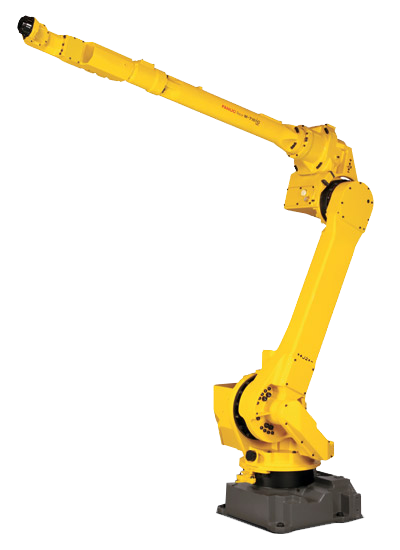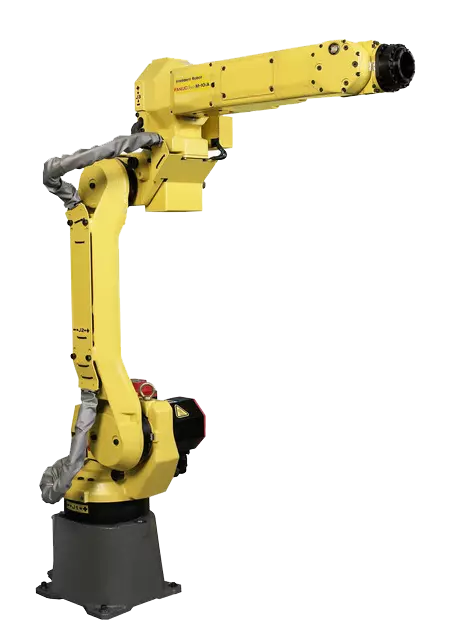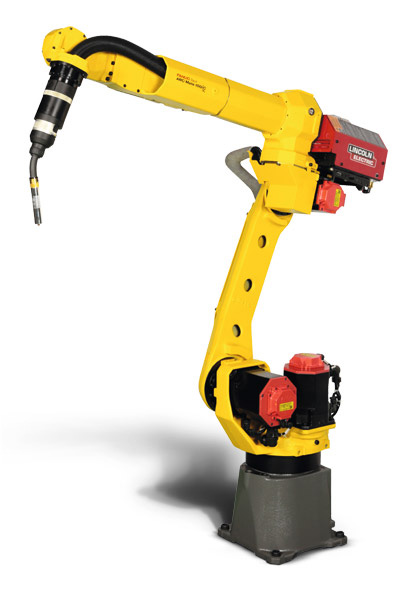Preventative Maintenance for Robotic Welding Systems
Preventative maintenance is important for protecting your investment in a robotic welding system and ensuring your entire system operates to its full potential. Regularly performing preventative maintenance keeps your welding system functioning properly and prevents breakdowns of equipment that cause unplanned downtime and higher costs. It is not just your robot that requires routine maintenance, but your entire welding system including the welding power source, weld torch, wire feeder, and consumables. Keeping up with maintenance will extend the lifespan of your robot welding system allowing users to fully realize the advantages of automating with robots
Welding Robots
Just like with other industrial robots, arc welding robots require the same routine maintenance for optimal operation. A FANUC Arc Mate 100ic that undergoes preventative maintenance regularly will perform better and more consistently than a FANUC Arc Mate 120ic that does not. Well maintained robots not only last longer but also retain their value should users decide to sell the used welding robot in the future. Common robot maintenance tasks include backing up the controller, replacing grease, cleaning the mechanical unit, among many others. The frequency of robot maintenance depends upon the manufacturer as each one specifies how many hours a robot may operate in between maintenance schedules.Welding Liners
Welding liners are one of the first components of a robotic welding system to show wear. These should be monitored regularly and replaced before they fail. Inspecting the welding liner and noting when it begins to deteriorate allows users to determine the frequency of its replacement. For example, if you have a ABB IRB 2600-12 welding system that operates twenty-four hours a day, it is best to change the liner once a week.Cables
All welding system cables should be inspected on a regular basis. They should ideally be secured so they do not drag, rub, or move excessively against the floor, robot, or other equipment which can lead to premature wear. Any worn or damaged cables should be immediately replaced to prevent the system from malfunctioning. used FANUC welding robots such as the FANUC Arcmate 120ic/10L feature a hollow wrist allowing for better protection of cables.System Connections
The connections of your welding torch should be routinely monitored and inspected. Torch connections can be easily checked during operation breaks. The welding torch should always remain secure to the robot wrist. Torch consumable connections including the diffuser, contact tip, and nozzle should also remain tight. Any connections that are found to be loose should immediately be secured to prevent the premature wear of consumables and poor weld quality from occurring.Weld Torch
The weld torch plays a vital role in robotic welding and should be well maintained to ensure optimal weld quality. One of the main issues that can cause havoc on welding systems is the buildup of spatter in a welding torch. Spatter buildup causes poor welds, blocks shielding gas, and prevents proper distribution of heat. This can lead to replacing consumables prematurely, higher operating costs, and the breakdown of the torch itself. To prevent spatter buildup from occurring the nozzle, retaining head, and contact tip should be routinely monitored and cleaned. Investing in a torch cleaning station or reamer can help prevent spatter buildup and significantly speed up the cleaning process. Integrating a reamer with your Motoman HP6 automates torch cleaning, ensuring proper welding system functionality.Robots Done Right is the place to start when it comes to used robots. Contact us if you are interested in buying or selling your used robot.




